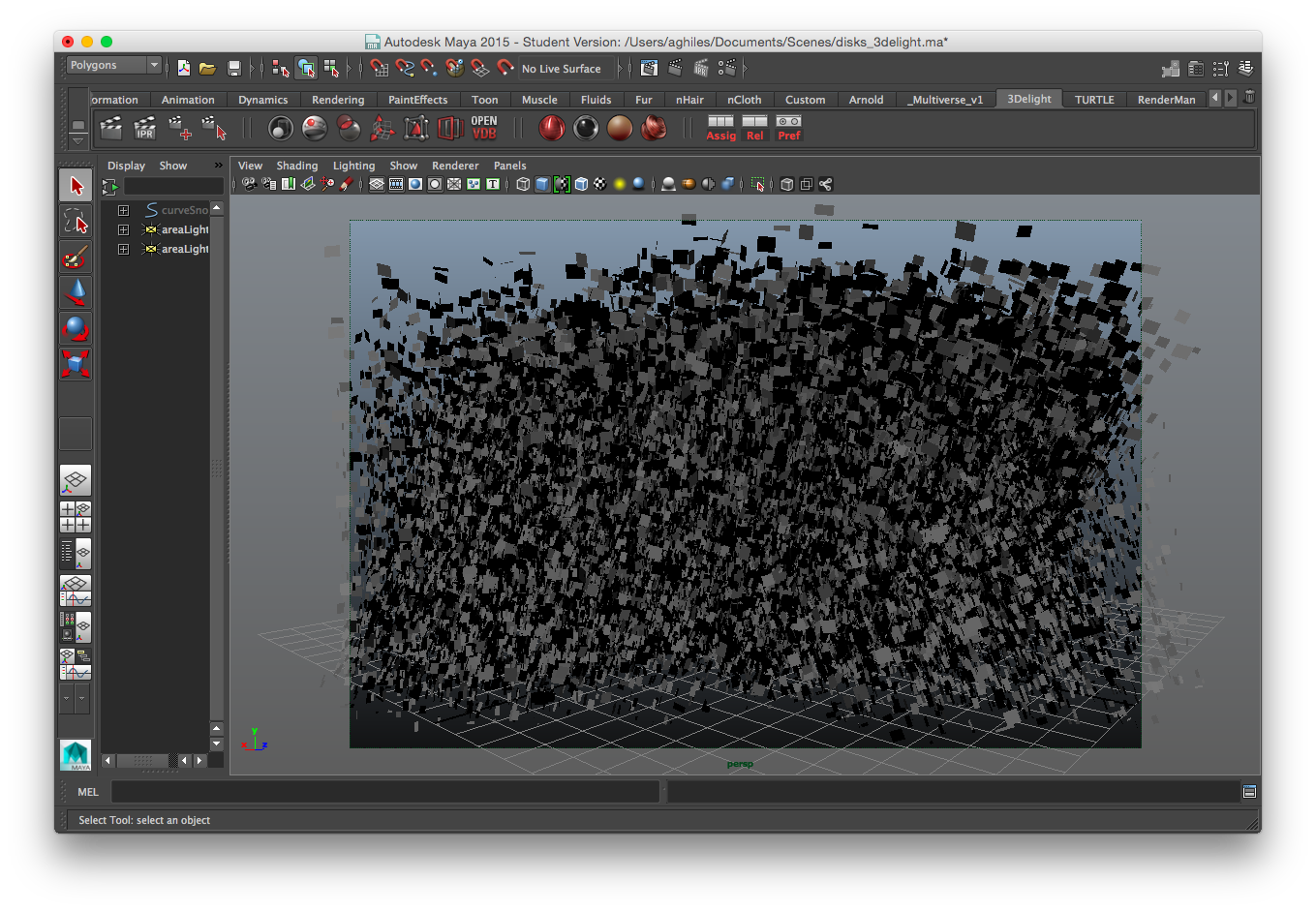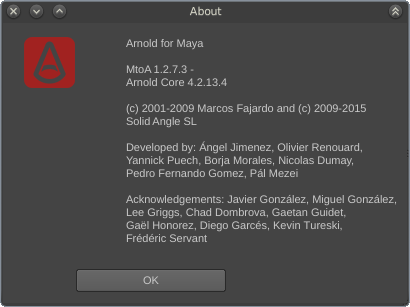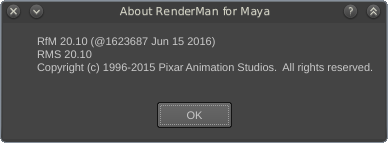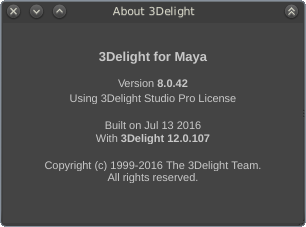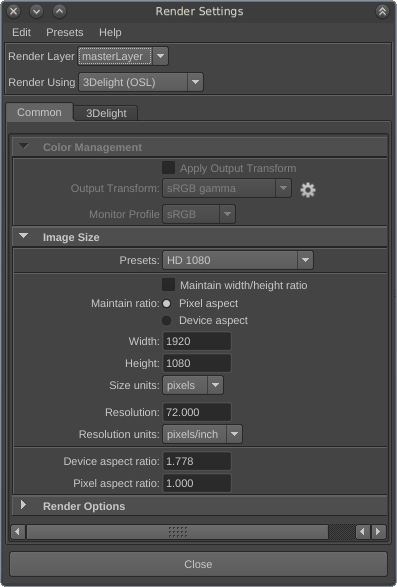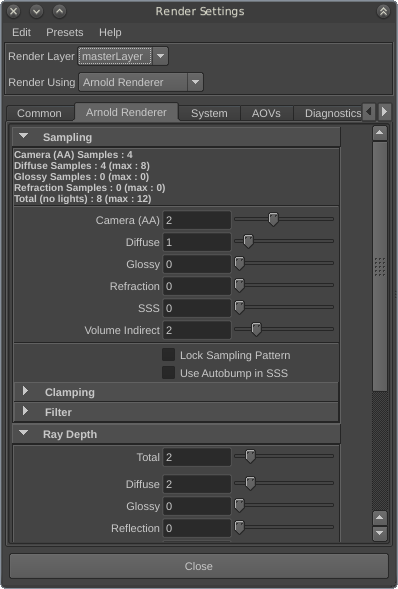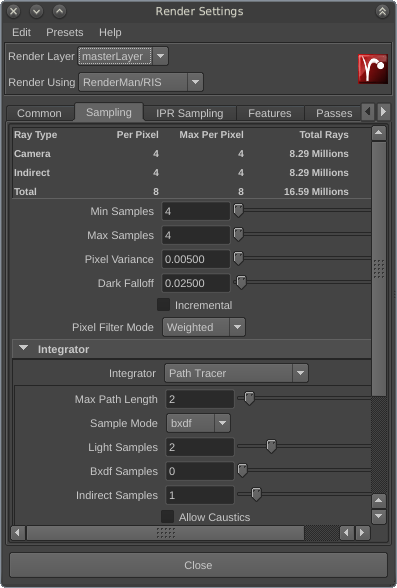...
- We will just use diffuse reflectors. We don't want complex BRDFs sampling to get in the way.
- We will disable any adaptive sampling so to make sure we have very close ray-counts.
- We will use only one diffuse bounce. This will circumvent some complex variables from the equation (Russian roulette and other tricks of the trade).
- The scene is easy to load, setup and render. It is available for all tested renderers.
All renders are done in Maya 2015 Extension 1.
The scene looks quite ugly in the viewport: just a large collection of rectangles generated using PaintEffects.
...
The cutout is done using a Maya Ramp. In Arnold it is connected to "opacity", in RenderMan to "presence" and in 3Delight to "transparency" !
(3Delight shown here)
The Renderers
| Arnold | RenderMan/RIS | 3Delight OSL | 3Delight RSL | |
|---|---|---|---|---|
| Version |
| |||
| Technology | Unidirectional path tracer. | Using unidirectional path tracer. Other options are available but not useful for this test. | Unidirectional path tracer. | Undirectional path tracer |
| RSShadersShaders | C++ | C++ | OSL | RSL |
The Methodology
...
| Code Block |
|---|
total used free shared buffers cached
Mem: 11984 8139 3844 0 151 4728
-/+ buffers/cache: 3259 8725
Swap: 0 0 0
|
...
The Setup
Each renderer uses a different sampling strategy and how rays are distributed between each sampled component. We selected a setup that produces nearly the same number of rays in all renderers. Look wise, it was easy to obtain very similar renders between Arnold and 3Delight. We had to boost area light contributions in order to get a similar lighting in RenderMan/RIS.
...
| Common | Arnold | RenderMan/RIS | 3Delight OSL | 3Delight RSL | |
|---|---|---|---|---|---|
| Version | |||||
| Remarks | Area lights have 1 sample each. | Min Samples = Max Samples. | Only shading samples to set for sampling BRDFs. 3Delight OSL takes care of the rest. | The RSL path-tracer traces much more rays with the same settings. Refer to normalized performance only |
The Results
| 3Delight OSL | Arnold | RenderMan/RIS | 3Delight RSL | |
|---|---|---|---|---|
| Image | ||||
| Total number of rays | 28.5 Millions | 31.6 Millions | 30.9 Millions | 37.4 Millions |
| Time on Linux | 33 seconds | 50 seconds | 74 seconds | 179 seconds |
| Compared to 3Delight OSL * | -- | 1.36 times slower | 2.07 times slower | 4.16 times slower |
* Taking into account the total number of traced rays
...
Multi Light in 3Delight doesn't have a perceptible adverse effect in this test (although from experience, rendering much more Multi Light AOVs, one can expect a 1-3% penalty).
This particular test shows the limitations of RSL shaders and the limitations of the JIT architecture they use. Even
Resources
Here are the links to reproduce the tests on your system.
| Arnold | 3Delight OSL |
|---|
| 3Delight RSL | RenderMan/RIS | |||
|---|---|---|---|---|
| Maya Scene (ASCII) | disks_arnold.ma | disks_3delight.ma | disks_3delight.ma (same) | |
| Statistics | stats_arnold.1.txt | stats_3delight.txt | ||
| EXR images (linear) |
| disks_3delight_RSL.exr | disks_prman.exr |
